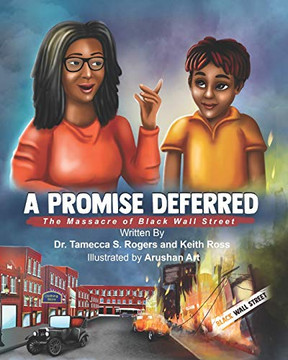
Createspace Independent Publishing Platform
Black Tuesday: The History And Legacy Of The Wall Street Crash Of 1929
Product Code:
9781542755207
ISBN13:
9781542755207
Condition:
New
$11.51

Black Tuesday: The History And Legacy Of The Wall Street Crash Of 1929
$11.51
*Includes pictures *Includes accounts of the stock market crash written by newspapers and other contemporaries *Includes a bibliography for further reading *Includes a table of contents The Roaring Twenties were an age of optimism. New technology was being invented, and novel products were making their way to the store shelves. Americans believed that a new era, driven by technology, was upon them, and this optimism extended to financial markets. Investments especially soared in the bond market, where investors lent money to companies, and the stock market, where investors bought partial ownership of companies. During the 1920s, financiers believed that the economy would continue to boom, as it had been since the end of World War I. As a result, investors and financiers increasingly accepted lower and lower returns on money they lent. In the stock market, the result was much the same: stocks skyrocketed throughout the 1920s, led by new technology stocks, such as Radio Corporation of America, or RCA, which made radios and owned broadcasters. However, the rampant purchasing and rise in prices meant that stock prices soon bore little relationship to the underlying value of the businesses, because the prices were bid up by investors. Prior to 1920, few middle class Americans owned shares in the stock market, but as the prices of stocks grew, the enthusiasm for purchasing stocks grew as well. More middle class Americans purchased stocks in the 1920s than ever before. As stock prices rose throughout the 1920s, some economists believed that stock prices would never fall back to where they had been before World War I. Economist Irving Fisher famously said "Stock prices have reached what looks like a permanently high plateau." Some speculators even sought to capitalize on rising stock prices by borrowing money to buy stocks. Buying stocks with borrowed money had previously seemed very risky, because if the stock market declined, the speculator would be required to post additional collateral to back the loan. But with share prices continuously rising, buying with borrowed money seemed like a good way to make larger profits. However, during the fall of 1929, the stock market was becoming increasingly unstable. Prices would rise and fall rapidly, and some investors were becoming more cautious. Then, on October 24, 1929, the stock market lost 11% of its value right at the opening of the stock market. Panic ensued, but several prominent investment bankers were able to restore confidence by buying stocks well above the market rate. Investors were still extremely nervous, however, and when word of the panic spread over the weekend, investors flooded their brokers with sell orders for Monday morning. On Monday, October 28, the market fell almost 13%, earning it the moniker "Black Monday." The market fared no better the next day, falling nearly another 12% during what became known as "Black Tuesday." This time, efforts by wealthy investors, including members of the Rockefeller family and General Motors founder William C. Durant to restore confidence failed. Durant believed he could single-handedly restore confidence to the market by committing his whole fortune to buying stocks; instead, his business failed. Black Tuesday was a catastrophe the country wasn't ready for, and in fact, the market would not return to its 1929 peak until the 1950s. Black Tuesday is best remembered for investors and consumers making a run on banks that could not service everyone, and banks failed often during the Great Depression, due to bad loans and a lack of public confidence that produced further bank runs. The Federal Reserve was reluctant to backstop banks and protect them against bank runs, so banks were unable to borrow enough money to cover depositors' demands. When banks failed, depositors who couldn't get their money out of the bank were wiped out.
| Author: Charles River Charles River Editors |
| Publisher: CreateSpace Independent Publishing Platform |
| Publication Date: Jan 26, 2017 |
| Number of Pages: 56 pages |
| Language: English |
| Binding: Paperback |
| ISBN-10: 1542755204 |
| ISBN-13: 9781542755207 |





